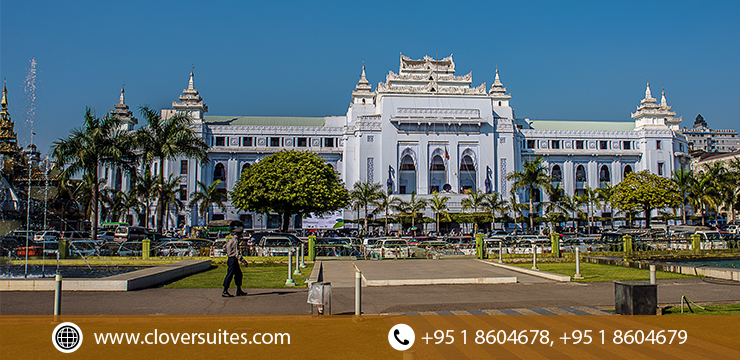A Visit to Myanmar's Colonial-Era Capital, Yangon

Of all South East Asian cities, Yangon has the highest number of colonial era buildings. Hundreds of late 19th century structures remain on an area of several square miles in the downtown area.
In 1852 the British seized much of Burma including Yangon and made the city the Burmese capital in 1885. They constructed a great number of grand, impressive, majestic buildings in Victorian, Queen Anne, Art Deco, British Burmese and Neoclassical style. As a result of Burma’s isolation the city remained much like it was since the end of the 19th century. The old business district near the river still looks much like it did a century ago.
After several decades as the independent nation's capital, the military rulers of Myanmar moved to the inland city of Naypyidaw, transferring most embassies and government offices in the process. The city's demotion has apparently done it little harm – Yangon remains one of Myanmar's most important cities, thanks to its historic architecture, cultural cachet and its transportation links to the rest of the country and to the world.
Where to stay in Yangon
Found in the western part of Yangon is Bahan. This is one of the most thriving areas of the city, with museums, markets, pagodas, gardens, and more worth exploring in the area. One of the area’s biggest claims to fame is the Shwedagon Pagoda, which is estimated to be over 2,500 years old. Visitors will make the climb up one of the four entrances to reach the stunning pagoda, which is best viewed in the evening when the entirety of it is golden in color and simply gleams against the dark sky.
Eastern Yangon is made up of a plethora of areas to choose from. Those travelers who consider themselves culture vultures may want to stay in Botahtaung, as it is equipped with many structures built during the colonial era that will impress even the most avid of designer.
South Yangon is probably smaller and has fewer things to see and do. Some attractions in the area, however, do include the St. Francis’ Catholic Church, the Nagalein Pagoda and the Mogaung Pagoda. Yankin is the most thriving of areas in Southern Yangon.
North Yangon is one of the furthest cities from downtown Yangon. This area is home to one of the most successful provinces in the city, Kamayut, where a number of the city’s universities are located, in addition to the Judson Chapel.
The must-see sites in and around Yangon reflect centuries of history dating back to the Mon kingdoms that first built the city's iconic structure, the Shwedagon Pagoda. When you are done making the rounds of Kandawgyi Lake and its floating restaurant; the historic British-Empire-style buildings around Mahabandula Park; and tourist attractions outside city limits, like the Kyaiktiyo Golden Rock Pagoda and the Taukkyan War Cemetery; finish your trip with an afternoon going shopping at the Bogyoke Aung San Market – you can pick up a longyi, the traditional daily wear of Myanmar locals, among other interesting souvenirs.
Source : https://www.renown-travel.com/burma/yangon/colonialbuildings.html
https://www.tripsavvy.com/south-to-north-myanmar-itinerary-4120215
https://theculturetrip.com/asia/myanmar/articles/the-best-places-to-stay-in-yangon
01-cloversuites.com
